Top>Education>Research is mankind's ultimate recreation —Research of fungus weevils & the message that I want to convey to students—
 Index
Index
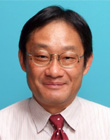
Toshio Senoh [Profile]
Research is mankind's ultimate recreation
—Research of fungus weevils & the message that I want to convey to students—
Toshio Senoh
Science Instructor of Insect Systematic Entomology, Biogeography, Japan Entomological History, Chuo University Junior & Senior High School
My encounter with fungus weevils
It is very interesting to conduct research which is focused on a single subject, although people who have never experienced the fun of research may laugh and call me obsessed. My desire to be involved with insect research led me from a small country high school to the metropolis of Tokyo. Immediately after the end of my university entrance ceremony, I was knocking on the door of the entomology laboratory. Several days later, I underwent an interview and had the good fortune to succeed in entering the laboratory. I was given a desk and a stereomicroscope in the corner of the laboratory. Shortly afterwards, my days became filled with entomology experiments and insect classification seminars, insect ecology seminars, and insect morphology/physiology seminars starting from the early evening.
On day in May, I was blessed with the opportunity to have dinner with one of my professors. At that time, I was feeling slightly tired and discouraged after the first few months of university life. I confessed to the professor how I had felt a secret pride at my collection of 200 types of longhorn beetles, only to feel dejected when I learned that older students had collections with more twice that number of types. The professor then told me that the classification of longhorn beetles had been advanced to a high degree, and recommended that I conduct research in Anthribidae (commonly known as fungus weevils), a family of beetles similar to longhorn beetles. Since that day, research in fungus weevils has been my life work.
Research in fungus weevils
Research in the classification of insects begins with the collection of specimens. After completing my 1st year of undergraduate school, I spent a month traveling around Taiwan with an insect net in my hand. The trip boosted my momentum, and I flew to different countries in Southeast Asia every year. After becoming a graduate student, I spent periods of 2 to 6 months in solitary wandering through Southeast Asia, all in the name of surveying fungus weevils. The countries I visited include Thailand, Malaysia, Indonesia, the Philippines, and Vietnam.
One day, I grew tired of walking and sat down on a fallen tree covered with moss. Looking up, I saw a large tree covered with the beautiful drooping flowers of epiphytic orchids. This view was like a tonic of refreshment. Upon advancing deeper into the forest, I encountered the quiet lifestyle of indigenous mountain tribes.
A variety of fungus weevils thrive in regions from the subtropical to tropical zones. Although it is estimated that several thousand species of fungus weevils exist on the earth, researchers have not yet confirmed the actual condition. Currently, a distribution of 184 types of fungus weevils has been confirmed in Japan.
Personally, I have discovered more than 100 new species of fungus weevil. However, this number is just a tiny, tiny portion of the unknown species.
1) Discovery of the world's largest fungus weevil
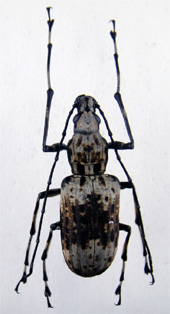
Figure 1: Eugigas morimotoi Senoh, the world's largest Long-Legged Giant Fungus Weevil.
From within the anthribids of Eugigas (Long-Legged Giant Fungus Weevils), the Eugigas goliathus Thomson is found in areas from the Malay Peninsula to Sumatra, Java and Borneo. Furthermore, the Eugigas schoenherri Thomson is found when crossing Weber's Line and proceeding in the direction of New Guinea.
In autumn of my 3rd year after assuming a position at the Chuo University Senior High School, I received a single specimen of the Eugigas family from a senior researcher at the university's entomology laboratory. The specimen was collected on the island of Sulawesi (Indonesia). At first look, the specimen appeared similar to the goliathus found from the Malay Peninsula to the island of Borneo. However, upon closer examination, it was certified that clear differences existed in the spots formed by fine hair on the body surface, as well as in the length of the antenna and the telson at the end of the abdomen. This new species was announced in academic journals as the 3rd species of the Eugigas family.
Although this .new species of fungus weevil has antenna that are nearly the same length as its body, it also has the unusual characteristic of extremely long front legs. The insect measures more than 40 millimeters from head to tail, making it the largest fungus weevil in the world. However, even bigger species of unknown fungus weevils may exist in areas of the Amazon River basin.
2) Discovery of a new genus and species from Hubei Province, China
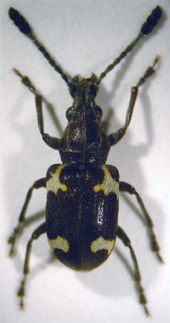
Figure 2: Morimotanthribus chinensis Senoh et Trýzna. Note the characteristically long mouth.
Dr. Trýzna of the Czech Republic's National Museum of Science visited my homepage entitled Research Center of Anthribidae![]() . His visit was the start of our exchange of opinions regarding fungus weevils.
. His visit was the start of our exchange of opinions regarding fungus weevils.
Several years ago, a European survey team collected two unusual fungus weevils from a native forest located at an altitude of 1,300 meters in China's Hubei Province. These fungus weevils were sent to Dr. Trýzna for examination. Dr. Trýzna was not sure regarding the systematic location for classification of the beetles, and he sent me a photograph by email, asking my opinion. I enlarged the photograph on my computer screen, but I also had no idea regarding the classification of this odd species. Dr. Trýzna and I then began joint research, and I had the specimens sent to me. I examined the specimens using the stereomicroscope of the biology laboratory. Based on the shape of the abdominal end, I determined that both of the specimens were male. I continued to closely examine the head, chest and abdominal areas of the specimens, and I immersed myself in related literature. Eventually, I reached the conclusion that the species did not belong to any known family. Therefore, I created a new family in which to classify this new species.
Dr. Trýzna and I decided to give the new family the scientific name of Morimotanthribus, in reference to Professor Emeritus Morimoto, a great scholar of fungus weevils. Furthermore, since the species was discovered in China, we decided upon the species name of chinensis. Our joint thesis was published in a Japanese academic journal.
3) Danger of extinction
During my time as a student, I worked in the specimen room of our laboratory in an effort to organize the fungus weevils which had been collected over many years. During my work, I discovered a large fungus weevil which had been collected on Mt. Yuwan-Dake of Amami Oshima Island. The beetle was not listed in any field guides. After a thorough examination of related literature, I determined that this fungus weevil was a new species (Figure 3). I named the species Peribathy shinonagai Senoh after the collector (at that time, a Professor at Tokyo Medical and Dental University) and published the species in an academic journal.
Two years after that discovery, I was sent a specimen which resembled the shinonagai species of Amami Oshima Island. The specimen came from a researcher who had been conducting a month survey in the Yanbaru Forest located on the northern part of Okinawa's main island. The spots and colors of this specimen were different from the shinonagai, and examination by microscope soon revealed that it was a new species. I immediately wrote a thesis regarding this find. I named the new species Peribathys okinawanus Senoh, which means inhabitant of Okinawa in Latin (Figure 4).
These specimens were among the largest fungus weevils in Japan, so I thought that they should also have Japanese names. I gave the name of Kimadara Giant Fungus Weevil to the shinonagai found on Amami Oshima Island, and the name of Gomadara Giant Fungus Weevil to the okinawanus found on the main island of Okinawa. I gave the family the Japanese name of Madara Giant Fungus Weevil.
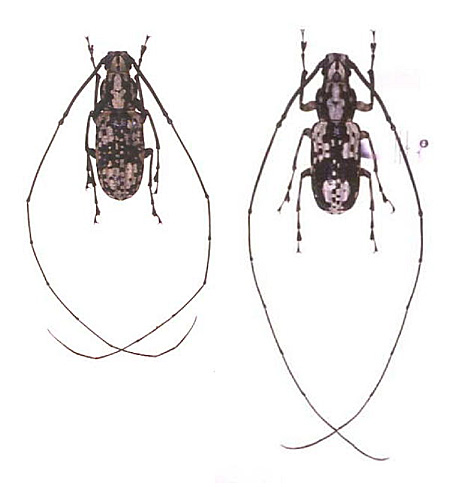
Figure 3: Peribathys shinonagai Senoh (Kimadara Giant Fungus Weevil) found on Amami Oshima Island (left)
Figure 4: Peribathys okinawanus Senoh (Gomadara Giant Fungus Weevil) found on the main island of Okinawa (right)
Although the Kimadara Giant Fungus Weevil is found only on Amami Oshima Island and the Gomadara Giant Fungus Weevil is found only on the main island of Okinawa, similar species can be found in distant regions such as Taiwan, southern China, Vietnam and tropical regions of Asia.
It is my theory that a single species existed when Amami Oshima Island and Okinawa were connected to the eastern edge of the Eurasian continent in the very distant past. Amami Oshima and Okinawa were then separated from the continent by ocean movements associated with changes in the earth's crust and weather patterns. This ocean barrier eliminated exchange of genes with the continental population. Over time, the populations isolated on Amami Oshima and Okinawa each evolved into other species. The smaller the population, the more influence is exerted by changes in gene frequency caused by genetic drift. This is especially true for populations contained within small regions such as islands.
The Kimadara Giant Fungus Weevil and the Gomadara Giant Fungus Weevil are currently included on the red list of the Ministry of the Environment. The species are not yet classified as endangered species due to a lack of information. However, if the natural environment deteriorates on Amami Oshima Island's Mt. Yuwan-Dake, where the Kimadara Giant Fungus Weevil is found, or in the Yanbaru Forest in the northern area of Okinawa, where the Gomadara Giant Fungus Weevil is found, then there is a sufficient possibility that each of the species will disappear from the face of the earth. Extinction is common for large organisms that exist in small populations in confined regions.
The concept of biodiversity includes diversity of species, diversity of ecosystems, and diversity of genes. In addition to the forests and mountains where insects such as fungus weevils are found, we must also protect a variety of ecosystems including the ocean, shoals, rocky beaches, tidal flats, rivers, marshes, lakes, swamps and alpine areas. Ecosystems are habitats for organisms, and each ecosystem contains a large amount of specifically adapted organisms. If ecosystems are not maintained, then the preservation of species and genes will become extremely difficult. The protection of organisms is equivalent to the protection of the life's diversity.
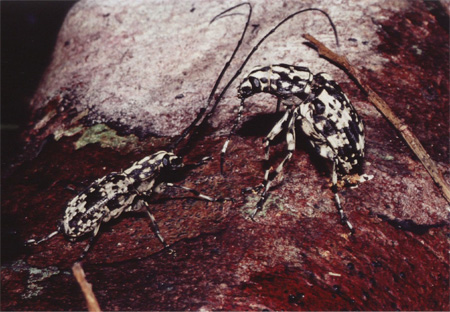
Figure 5: Peribathys okinawanus Senoh (Gomadara Giant Fungus Weevil). Photographed by Mr. Kazunori Kume on Mt. Nishime-Dake (Yanbaru Forest) on the main island of Okinawa.
The above photograph (Figure 5) shows a female (right) Gomadara Giant Fungus Weevil (Peribathys okinawanus Senoh) laying eggs on a fallen tree while a nearby male beetle watches over her. The male beetle may be waiting for a chance to mate. The female's ovipositor is positioned nearly perpendicular to the fallen tree and is dug into the bark. Sawdust can be seen around the hole for laying eggs.
The natural environment must be preserved so that this kind of scene can be witnessed whenever entering the Yanbaru Forest.
Conveying my experiences to students
Whenever I have the opportunity, I discuss my experiences with students.
I often discuss experiences which I had when wandering endlessly by myself through unmapped tropical jungles with an insect net in my hand. For example, I talk about the fear that I felt when being held at gunpoint by armed guerillas in a mountainous area along the border of Thailand and Myanmar, or when I encountered a large tiger deep in the mountains of Java Island. I also discuss indigenous mountain tribes whose clothing differs by village, as well as my impressions regarding the culture of Southeast Asian countries. Sometimes I even ask my students for advice when I am having problems advancing my own research.
Chuo University has a program for independent research travel. In this program, approximately 20 to 30 students are given a research theme. After a period of advance study, students perform an onsite survey. Upon returning to Japan, they summarize their research for presentation. I decided immediately to lead my students to Thailand, the current setting for my research.
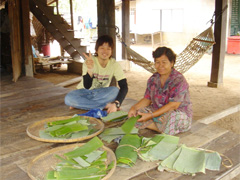
Figure 6: Student T and his home stay mother at a village in northeastern Thailand. Banana leaves are used instead of dishware and kitchen wrap.
Initially, I had the image of dividing into groups in order to collect data related to the research theme. However, my students said that they wanted to try home stays in Thailand. Therefore, I created a plan in which my students did home stays in a village in northeastern Thailand. While staying in the village, students experienced the fundamental culture of Thailand and had exchanges with local people of the same age. During the period of advance study, students broadly covered topics such as the nature and culture of Thailand. As expected, the most difficult aspect of preparation was the Thai language. After I taught the basics of the Thai language, I invited a Thai instructor from a Thai language school to our university. Students then spent two days of intensive study in the Thai language. Contents included greetings, words, and sentence patterns which would be useful during the home stay.
In Thailand, groups of two students stayed with families living in stilted houses. Students experienced a variety of aspects of Thai culture. In Thailand, there is no custom of soaking in baths, and people take showers instead. However, there is a small amount of rainfall in northeaster Thailand. Therefore, gutters are used to store rainwater in a large tank. Bathers then pour this water on their heads using buckets. A female student who experienced this method of showering told me that her hair smelled like rain after she had washed it. Her description of shower struck me as very refreshing. One of my male students told me about his experience in eating insects. According to him, both grasshoppers and caterpillars were crispy, but he disliked the aftertaste of grasshoppers.
Also, one of my female students wrote about her experiences as follows:
(Omitted)
After exchanging goodbyes with a village girl who I had befriended, the girl pointed to the night sky. I only understood a few words that she said, such as "yee-bpoon (Japan)" and "duu (look)". However, by listening to her talk and observing her gestures, I was able to understand what she said. She said that she would continue to look at the stars even after I returned to Japan, so she also wanted me to look at the stars in Japan.
(Omitted)
I have heard that some recent home stay programs in Europe and America are run as if they were boarding houses. However, I am sure that my students will always remember our experience in the poor yet austere lifestyle of this Thai village. Their experiences included farming practices such as the thrashing of rice and the harvesting of corn and mangos. Students made Thai cuisine and Thai snacks wrapped in banana leaves, tried weaving silk, made straw hats and pencil cases, performed early-morning alms, and rode elephants. I witnessed my students overcome language barriers to become active in the village. Some student even cried when it was time to leave the village. Such experiences make me want to take my students on subsequent fieldwork. If I am able to organize such a program again, it will be the 3rd time.
I have learned much from fungus weevils
Through my encounter with a wonderful professor and fungus weevils at university, my life journey has been broadened greatly. My experiences are a priceless asset to me. In addition to the enjoyment of research, fungus weevils have taught me a variety of things. For example, I realized the fascination of investigating and contemplating cultures in Southeast Asia, I had encounters with long-necked tribes and other indigenous mountain tribes![]() when collecting fungus weevils, I came to appreciate the dress, accessories and customs of each respective tribe, and I developed an interest in the history and types of money on the Indonesian Peninsula
when collecting fungus weevils, I came to appreciate the dress, accessories and customs of each respective tribe, and I developed an interest in the history and types of money on the Indonesian Peninsula![]() .
.
I am truly grateful for my encounter with fungus weevils. Therefore, I hope that my students will find something in which they can become immersed, be it academics, art, sports, a hobby, or a special talent. Furthermore, I want my students to express themselves to the fullest extent in activities throughout the world.
- Toshio Senoh
Science Instructor of Insect Systematic Entomology, Biogeography, Japan Entomological History, Chuo University Junior & Senior High School - [Background]
Born in Yanagawa City, Fukuoka Prefecture in 1956.
Special Research Scholar in the Research Department of the National Museum of Science and Nature. Completed the doctoral program at the Tokyo University of Agriculture Graduate School (PhD in agriculture).
Academic thesis: Phylogeny and reclassification of the higher taxa of the Anthribidae (Coleoptera) occurring in the Palaearctic and Oriental Regions
Instructor at the Chuo University Junior & Senior High School. Member of the Environmental Survey and Review Committee, an organization associated with the Project for Expansion of Chuo University Athletic Facilities. Chairperson of the Japan Coleopterologcal Society Committee. Long-term overseas researcher. Visiting Researcher at Thailand's Thammasat University. Visiting Research at the Research Center of Insects and Animals, Thai Ministry of Agriculture and Cooperatives. Visiting Research at the Agriculture Department of Thailand's Kasetsart University. Instructor at the Chuo University Junior & Senior High School (current). - [Research Theme]
Taxonomic research of anthribidae. - [Affiliated Academic Organizations]
The Entomological Society of Japan
The Japan Coleopterologcal Society
Japanese Society of Systematic Entomology
Japanese Society of Systematic Zoology
- Research Activities as a Member of Research Fellowship for Young Scientists (DC1), Japan Society for the Promotion of Science (JSPS) Shuma Tsurumi
- Important Factors for Innovation in Payment Services Nobuhiko Sugiura
- Beyond the Concepts of Fellow Citizens and Foreigners— To Achieve SDGs Goal 10 “Reduce Inequality Within and Among Countries” Rika Lee
- Diary of Struggles in Cambodia Fumie Fukuoka
- How Can We Measure Learning Ability?
—Analysis of a Competency Self-Assessment Questionnaire— Yu Saito / Yoko Neha - The Making of the Movie Kirakira Megane








